Is it safe to eat food cooked in a new oven? This question might bother you as you excitedly unwrap your new, shiny oven, ready to cook scrumptious meals for your family and friends. While you may think using a new oven is as simple as plugging it in, some people worry about the possible health risks associated with cooking food in an appliance fresh out of the packaging. Concerns range from the possible presence of chemicals left from manufacturing to the potential release of toxic fumes during the first few uses.
In this article, we will restate your concerns by discussing the safety of eating food prepared in a new oven, how to deal with any potential hazards, and essential steps to take before using your oven for the first time. So read on as we explore the burning question, “Is it safe to eat food cooked in a new oven?”
What Are The Initial Steps To Ensure A New Oven Is Safe Before Cooking Food In It?
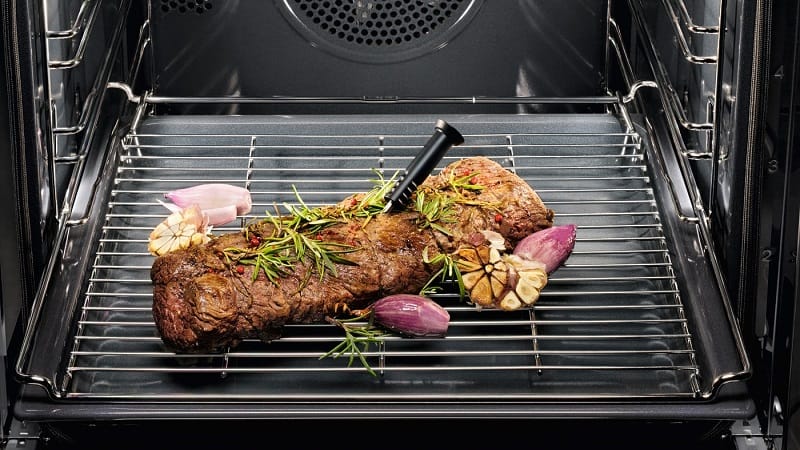
Before cooking up a storm, taking a few initial steps is important to ensure the oven is safe. Here are the steps I took to ensure my new oven was safe before cooking food in it:
- Read the manual: The first step in ensuring a new oven is safe for use is to read the manual. The manual will provide important information about properly using and caring for the oven. It will also give you important safety information, including how to prevent electrical shock and fire hazards.
- Check for damage: Before using the oven, it’s important to check for any damage. Look for any dents, scratches, or cracks in the oven’s exterior. Check the door to ensure it closes properly and that the hinges are secure. If you notice any damage, contact the manufacturer immediately.
- Clean the oven: Before using it for the first time, it’s important to clean it thoroughly. Use warm, soapy water and a soft cloth to clean the interior and exterior of the oven. This will remove dust, dirt, or debris accumulated during shipping and handling.
- Preheat the oven: Once the oven is clean, it’s important to preheat it before cooking. Preheating the oven will ensure that it’s working properly and that any residue or chemicals left over from the manufacturing process are burned off.
- Test the oven: After preheating the oven, it’s important to ensure it works properly. Place a small amount of food, such as a slice of bread, in the oven and set the temperature according to the instructions in the manual. If the food cooks evenly and the oven maintains a consistent temperature, it’s safe to use.
Is It Safe To Eat Food Cooked In A New Oven?
As long as the oven has been properly prepared, there should be no issue with cooking and consuming food in it. It is recommended to clean the oven and allow it to heat up to high temperatures before cooking any food in it. While a new oven may emit a smell from manufacturing residues, this is not harmful to the food or the person consuming it.
However, it is best to avoid cooking food prior to a burn-in process, as the smell may affect the taste of the food. As long as basic precautions are followed, there is no need to worry about the safety of eating food cooked in a new oven.
Are Any Chemicals Or Coatings Need To Be Removed Before Using A New Oven For Cooking?
To eliminate any potential health hazards and ensure optimal performance, running a proper burn-in cycle is recommended to burn off any residue of coating oil and eliminate the unpleasant smell. It is also suggested that you do not cook any food prior to this cycle as the smell and, potentially, the taste can stick with your food. By following these tips and taking the necessary precautions, you can ensure your new oven is safe and ready for use.
What Are The Potential Dangers Of Breathing In Oven Fumes While Cooking In A New Oven?
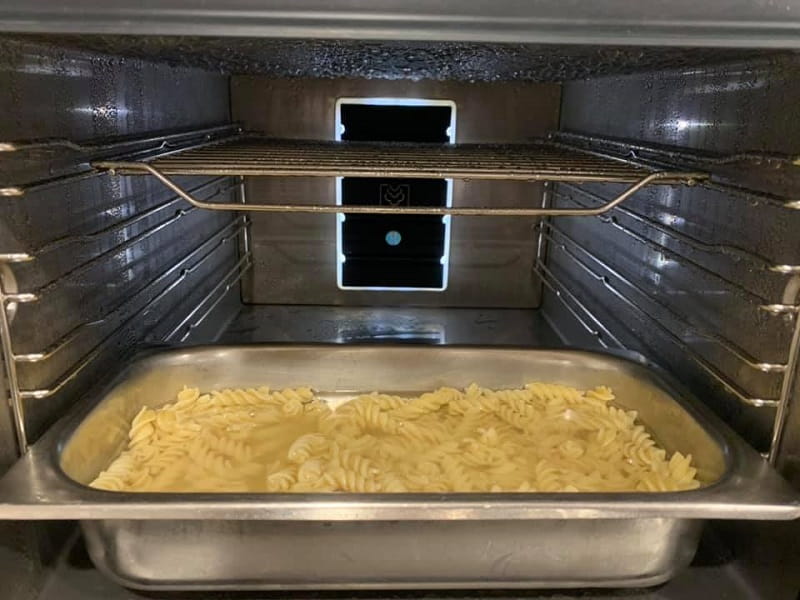
I wanted to share some information that I came across about the potential dangers of breathing in oven fumes while cooking. While it may not be something we typically think about, the fumes released during cooking can harm our health.
One of the main concerns with breathing in oven fumes is the risk of carbon monoxide poisoning. Carbon monoxide is a colorless, odorless gas that can be produced during cooking. If your oven is not properly ventilated or if it is malfunctioning in some way, carbon monoxide can build up and be released into the air. Breathing in this gas can lead to symptoms like headaches, dizziness, nausea, and even death in severe cases.
Another potential danger of breathing in oven fumes is exposure to toxic chemicals. Many ovens are made with Teflon or other non-stick coatings that can release toxic fumes when heated to high temperatures. These fumes can cause respiratory problems and other health issues if inhaled regularly over time.
To minimize the risks associated with breathing in oven fumes, there are a few things that you can do. First and foremost, make sure that your oven is properly ventilated. This means there should be enough space around the oven for air to circulate, and the exhaust fan should be turned on during cooking. Additionally, avoid using harsh chemicals like oven cleaners or abrasives that can damage the oven’s coating and release toxic fumes.
Read more:
- How Long to Cook Chuck Roast in the Oven
- How Long To Cook Pork Tenderloin In Oven At 400
- How Long To Cook Tri Tip In Oven At 375
How to Get Rid of the Smell?
After a few uses, the new oven smell lingered in my kitchen, and I knew I had to do something about it. Here are some tips I found on how to get rid of the smell of a new oven.
- Preheat the oven to the highest temperature: Before you start cooking, preheat your oven to the highest temperature for about 30 minutes. This will help burn off any residual chemicals or smells from manufacturing.
- Wipe the interior with a mixture of vinegar and water: Mix equal parts vinegar and water in a spray bottle and spray the oven interior. Let it sit for a few minutes before wiping it down with a damp cloth. Vinegar is a natural deodorizer that will help eliminate any remaining smells.
- Place a bowl of baking soda in the oven: Baking soda is another natural deodorizer that can help absorb unpleasant smells. Place a bowl of baking soda on the bottom rack of your oven and leave it in there overnight. In the morning, remove the bowl and discard the baking soda.
- Use activated charcoal: Activated charcoal is another effective deodorizer that can help eliminate strong odors. Place a few pieces of activated charcoal on a baking sheet and place them in the oven. Please leave it in there for a few hours before removing it.
- Air out the kitchen: If all else fails, open the windows and let some fresh air into your kitchen. The smell should dissipate over time and eventually go away on its own.
How Long Does It Take For The Harmless Oven Smell To Dissipate After Initial Use?
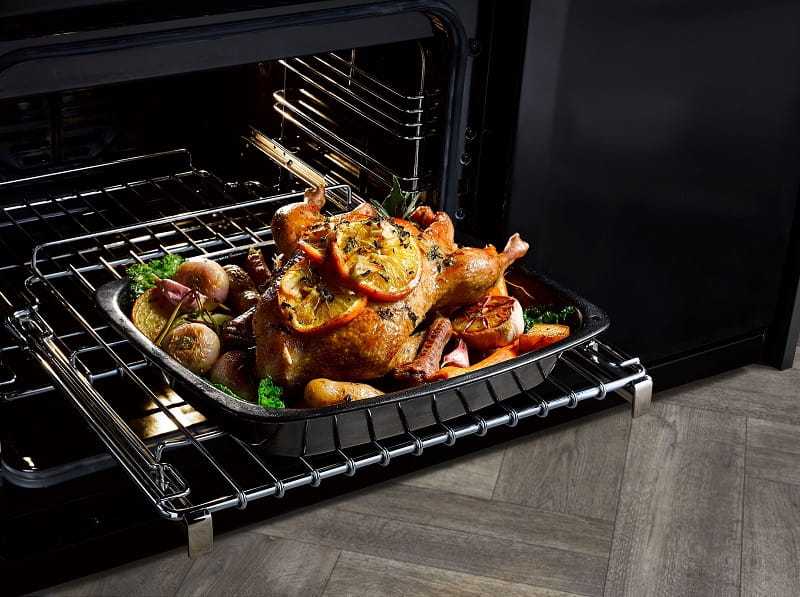
Have you ever experienced the unpleasant smell coming from a new oven after its first use? The good news is that this odor is harmless and will dissipate over time. Running an empty cycle at the highest temperature is the best way to get rid of the smell. It is recommended not to cook food before this cycle to avoid contamination. The duration of the smell varies from a few hours to a day, depending on the oven’s brand and model.
Some experts suggest boiling water with vinegar to help speed up the process. Proper cleaning before and after use means the oven’s smell will no longer be a problem. It is essential to be patient and wait for the oven to air out before cooking delicious meals.
What Steps Should You Take To Ensure That The Oven Is Ventilated Properly While Cooking?
s someone who loves to cook, I understand the importance of having a properly ventilated oven. Not only does it help to keep your kitchen smelling fresh, but it can also prevent smoke and other harmful fumes from building up in your home. Here are some steps to ensure my oven is properly ventilated while cooking.
- Check the vents: Look at the vents in your oven before cooking. Make sure that any debris or other items do not block them. If you notice any blockages, clean them out before you start cooking.
- Turn on the fan: Most ovens come equipped with a fan that helps to circulate the air inside. Make sure that you turn on the fan before you start cooking. This will help ensure any smoke or fumes are properly vented out of the oven.
- Use a hood: If you have a range hood above your oven, ensure it is also turned on. This will help to pull any smoke or fumes up and out of your kitchen.
- Open a window: If the weather permits, consider opening a window in your kitchen. This will help to create a cross breeze that can help to circulate the air and prevent any smoke or fumes from building up.
- Use the self-cleaning function: If your oven has a self-cleaning function, use it regularly. This will help remove any grease or other debris inside the oven, which can help prevent smoke and fumes from building up.
- Keep a fire extinguisher nearby: While proper ventilation can help to prevent fires, accidents can still happen. Make sure that you keep a fire extinguisher nearby, just in case.
Is There A Specific Type Of Cleaning Agent That Should Be Used To Remove Manufacturing Residues In A New Oven?
A dirty oven not only affects the taste of baked goods but can also create a safety hazard. That’s why, when it comes to removing manufacturing residues from a new oven, it’s important to use the right cleaning agent. The type of cleaning agent you should use depends on the manufacturing residue left behind in the oven. For example, you will want to use a degreaser if there is grease residue. If there is a lot of carbon buildup, you will want to use an oven cleaner specifically designed to remove carbon buildup.
Following the manufacturer’s instructions when using the cleaning agent is essential, as using the wrong product can be ineffective or even damage the oven. Generally, it’s best to use a cleaning agent designed explicitly for ovens and safe for use, depending on your oven type.
When cleaning a new oven, it’s important to take the time to thoroughly clean all areas, including the racks and the door. Remove all traces of the cleaning agent, as any leftover residue can affect the taste and safety of your baked goods.
In conclusion, there is no one specific type of cleaning agent that should be used to remove manufacturing residues in a new oven. The type of cleaning agent you should use depends on the type of residue left behind. However, baking soda, vinegar, warm soapy water, and neutral soap were effective and safe for cleaning ovens. Additionally, many degreasers are formulated for more rigorous use and can cut through stubborn residues, but check the label for any toxic chemicals.
Ultimately, the best approach to cleaning residues in your new oven is to follow the manufacturer’s instructions and use gentle cleaning agents that won’t damage the appliance. Take the time to thoroughly clean all areas of the oven, and remove all traces of the cleaning agent before using the oven for baking.
FAQs About Is It Safe To Eat Food Cooked In A New Oven
How Often Should A New Oven Be Cleaned To Maintain Safe Cooking Conditions?
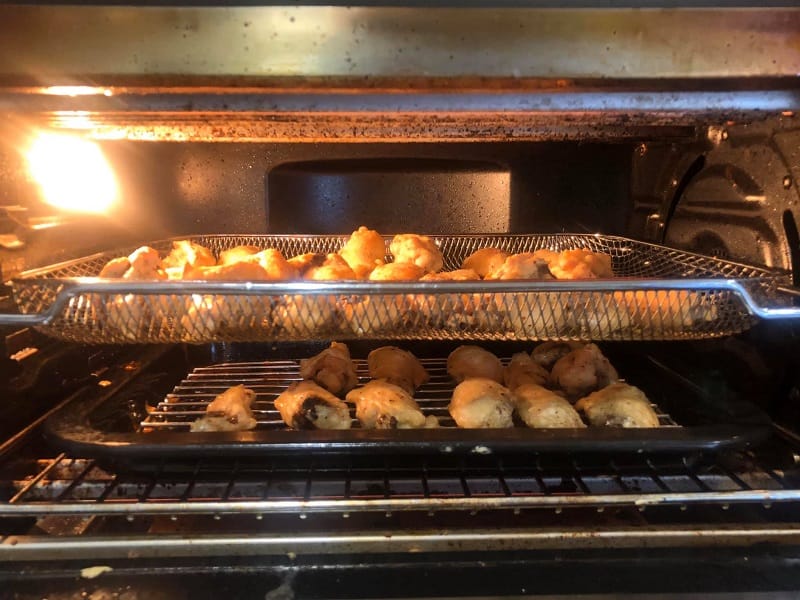
Experts say a new oven should be deep cleaned at least twice yearly. Additionally, it is recommended to give oven surfaces a quick clean after every use while still warm to prevent the build-up of grease and cooking residues. The self-cleaning feature can also be used, with some manufacturers recommending a monthly cycle to keep the oven clean. If the oven is used regularly, it is suggested to use a professional cleaning service every 6-12 months. Paying attention to these recommendations will keep the oven in good working condition and ensure that the food being cooked is safe for consumption.
Is It Necessary To Perform The Burn-In Process For A New Oven Before Cooking In It?
When using a new oven for the first time, performing a “burn-in” process is highly recommended before cooking any food in it. This process involves heating the oven to a high temperature for about 30-50 minutes, allowing any residual oils or chemicals from the manufacturing process to burn away. While it may produce a strong odor or smoke, opening windows or turning on the oven’s fan is normal and can be alleviated.
Not only does this process help eliminate any potential taste or smell from the oven but ensures that the oven is clean and ready for use. Users can enjoy safe and delicious meals with their new appliance by taking the time to burn in and clean their new oven properly.
What Is The Recommended Oven Temperature, And How Long Should The Oven Be Preheated For Before Cooking Food?
When it comes to baking and cooking, preheating the oven is an essential step. The recommended oven temperature may vary based on the recipe or food instruction label, but most recipes call for a temperature of 350°F. It is essential to preheat the oven for at least 15 to 20 minutes to ensure the oven is at the correct temperature before starting to cook.
However, the time to preheat may vary for larger ovens or different types. Pay close attention to the oven’s preheat tone indicator is crucial, indicating that the oven has reached the desired temperature. Only then is it suitable to insert food into the oven? Preheating the oven ensures that the food is cooked correctly, and with the recommended temperature and time, cooking and baking dishes will turn out perfect every time.
Does The Oven’s Manufacturing Residue Pose Health Risks If Not Properly Cleaned Before Cooking?
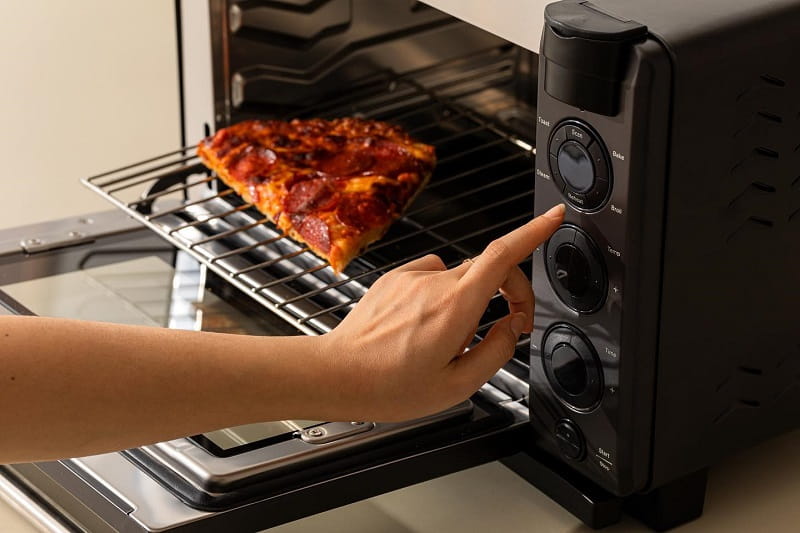
Keeping the inside of your oven clean is important to ensure your safety while cooking. If the oven’s manufacturing residue is not cleaned properly, it could pose potential health risks. The residue can contain harmful chemicals that may seep into your food and cause harm to your body.
Therefore, cleaning your oven before each use is highly recommended to prevent any potential risks. A trusted cleaner like Easy-off can help eliminate any leftover residue from previous cooking sessions. Taking these precautions allows you to enjoy your cooking and ensure a safer environment for yourself and your loved ones.
Conclusion
In conclusion, eating food cooked in a new oven is safe if you take the necessary precautions. Properly seasoning your oven, following cooking instructions, and using a meat thermometer are all important steps in ensuring your food is safe and delicious. So go ahead and enjoy your new oven and bon appétit!
References:
- https://www.cnet.com/home/kitchen-and-household/why-you-should-always-burn-in-your-new-oven/
- https://www.thekitchn.com/did-you-just-get-a-new-oven-5-things-to-do-right-away-242105
- https://www.houzz.com/discussions/2324139/new-oven-how-long-does-the-smell-last

Hey readers! Chip Holland here, and I’m a Manager of this website. My passion for writing about it only matches my passion for BBQ. Follow my blog for mouth-watering recipes, tips, and tricks for the perfect smoke, grill, and BBQ. I’m sure you won’t be disappointed!
